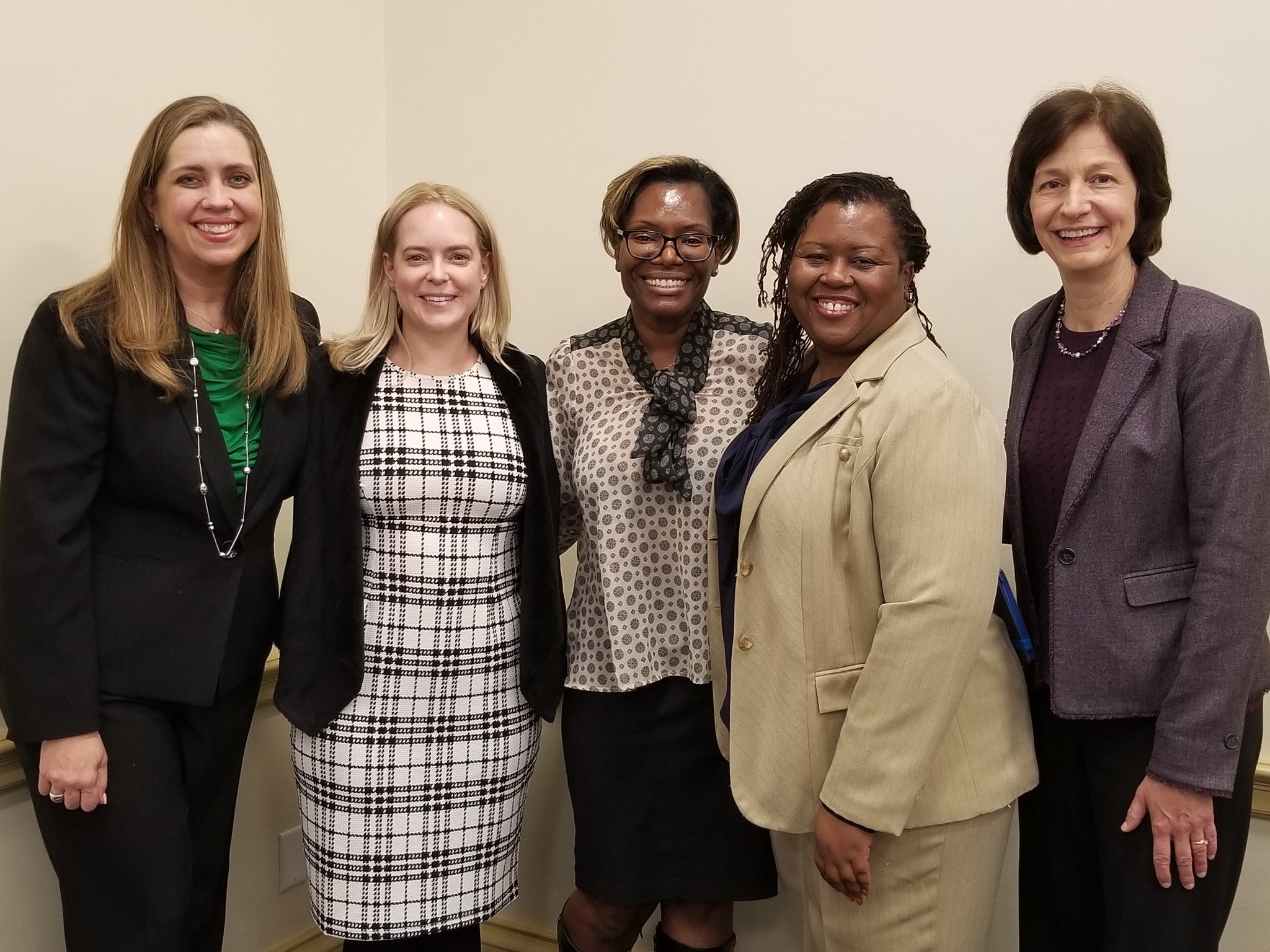Speakers at a congressional briefing on women veterans’ mental health (photo courtesy of Women’s Congressional Policy Institute)
By Sarah Osborn, SWHR Communications Associate
Women veterans are two times more likely than non-veteran women to die by suicide. Former service members alarmed by this trend spoke out at a congressional briefing about the dire need to improve access to mental and physical health services for women veterans, the fastest-growing veteran subpopulation.
“We don’t just represent ourselves, we represent all who are silenced and those who do not have a voice,” said Major April Harris, a U.S. Army veteran and advocate for increasing mental health services through the Department of Veterans Affairs (VA).
Cindy Hall, president of the Women’s Congressional Policy Institute, which co-hosted the annual briefing with the Disabled American Veterans, said the event “illuminated the mental health challenges facing female veterans and the need for multifaceted care and support not only for veterans, but also their families.”
The issue of suicide among women veterans is complex. Women in the military may deal with a complicated trauma history as well as greater scrutiny of their emotional state and mental health. In general, women veterans are significantly more likely to experience mental health difficulties as compared to civilian women and veteran men. In a 2017 survey by the Service Women’s Action Network, almost half of service women reported that their mental health was negatively affected by bias, harassment, or assault that took place during their military service.
Many suicide attempts across the broad population of veterans are thought to be influenced by combat-related post-traumatic stress. However, women who have experienced military sexual trauma show higher rates of suicidal ideation compared to those who reported combat-related post-traumatic distress, suggesting that military sexual trauma may be a significant contributing factor to mental health problems for women in the military.
According to the 2019 National Veteran Suicide Prevention Annual Report, the majority of veterans do not use Veterans Health Administration (VHA) services and the majority of veteran suicides occur among those who have not recently used VHA services. While women veterans are increasingly using VHA services — 22.4% in 2015, compared to 13.1% in 2005 — women who access these services remain as likely to attempt suicide as those who do not. From 2006 to 2015, there was no statistically significant difference between the age-adjusted suicide rates of women veterans using and not using VHA services.
Because the VHA has historically provided care for men, women may face barriers to accessing and receiving care in the health system (though VHA is trying to change that). Fear of stigma related to mental health issues or experiences with military sexual trauma may prevent women from fully sharing concerns about their mental health, even with trained VHA providers who are best equipped to intervene in these scenarios.
Independent analyses of the VA mental health and suicide prevention programs concluded that “engagement in VHA mental services was associated with decreased rates of suicidal ideation and suicide attempts” across a combined population of men and women veterans. In 2017, among all veterans who died by suicide, 38% had a VHA encounter in 2016 or 2017, while 62% had not.
VHA services are crucial for helping veterans access mental health care, but it is also apparent that more must be done to ensure women are comfortable speaking up about their experiences of trauma and emotional distress within the VHA environment.

Dr. Lisa Kearney, VA’s acting deputy director of suicide prevention (photo courtesy of Women’s Congressional Policy Institute)
Dr. Lisa Kearney, acting deputy director of suicide prevention at the VA, spoke at the congressional briefing and emphasized the agency’s goal to expand services and support systems for women veterans and their families, both in and out of active duty. She said the VA is working to bolster mental health services through a national network of women’s mental health champions and by providing gender-sensitive mental health training for clinicians.
Speakers at the briefing explained the negative ramifications of the gap in services for women who are transitioning from active duty to veteran status, including a lack of a community of fellow women vets, difficulty in accessing child care assistance for single mothers, and financial instability due to lack of financial literacy. They stressed that these emotional, financial, and structural challenges must be addressed to save the lives of American servicewomen who are at high risk of depression and suicide.
Kearney emphasized the essential role of VA’s partners in its suicide prevention efforts, stating: “We are grateful for our community partners collaborating with us to expand services and outreach to all women veterans across the nation, spreading the message that there is hope, healing happens, treatment works, and recovery is possible.”
Thank you, veterans, for your service.
Veterans Crisis Line: https://www.veteranscrisisline.net
